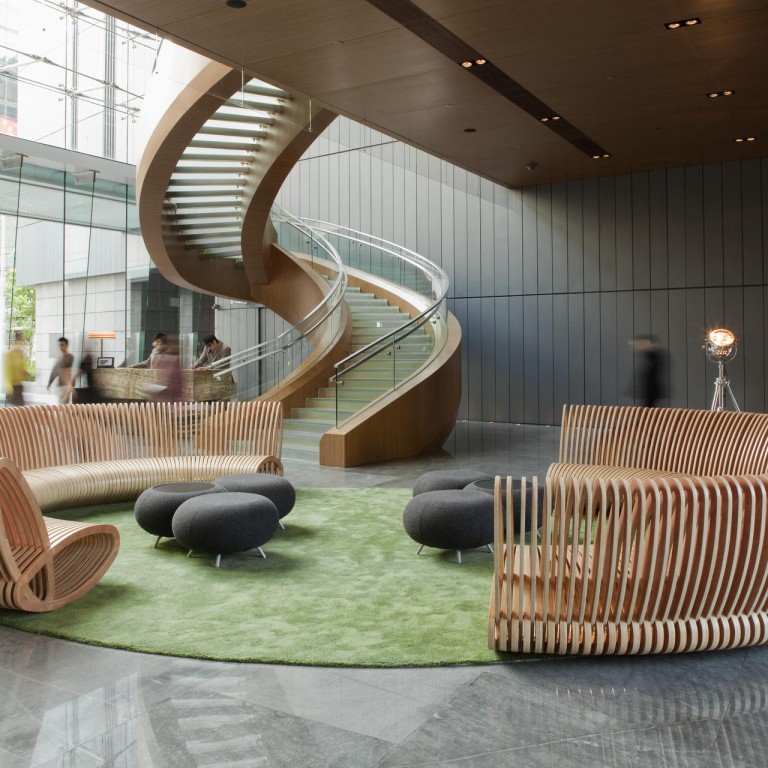
Hong Kong architect William Lim's all-embracing aesthetic on show
Exhibition includes eclectic mix of designs that have inspired him over 40-year career

The rescued birdcage, along with an intriguing selection of 20 other pieces that have most inspired Lim over his 40-year career, are to be exhibited at Hong Kong's ArtisTree. There will also be a presentation of sketches, materials, models and documents showing the design process for 10 of Lim's award-winning architectural and interior projects.
The idea for a fusion of project work and creative inspiration came naturally, says Lim, who eschews the notion of "artificial" boundaries separating art, architecture and design.

The birdcage, for example, caught Lim's eye not just for its intrinsic beauty but also for its structural integrity.
"The traditional form of cages made using ultra-fine bamboo strips looks incredibly fragile and yet it's structurally very robust. It is just naturally beautiful and functional."
Hong Kong-born Lim says he was interested in art from a very early age. The pivotal moment in developing his own style, however, came in the 1970s, when he left Hong Kong to study architecture at Cornell University in the US. Although his student work already showed a strong Asian influence, Lim says discovering American architect Frank Lloyd Wright's unique blend of East and West was a revelation.
"I was very influenced by the works of Frank Lloyd Wright. He was a very well-rounded designer, not just for his architecture, but also furniture and lamps. My exhibition includes a lamp I collected from the foundation as well as two of his autographed books dating from the 1930s that I found in a bookstore in Tokyo.
"It was interesting to find someone who was so influenced by Asian culture and to see the way he took the various elements and developed it. His understanding of Asian elements was not so much from the decorative side but the spatial planning side: the way he took a building from the surrounding landscape to the architecture, and through to the interiors and furniture. It had a large influence on my work."
After five years working in America, Lim returned to Hong Kong in 1987 and founded his own studio, CL3 Architects, in 1992. Award-winning projects include Nadaman at Hong Kong's Island Shangri-La hotel, and the interior design of the Marina Bay Sands in Singapore. In 2011 he represented Hong Kong at the Venice Biennale; his 37-metre-long fish-inspired installation the same year was awarded a Guinness World Record for the largest sculpture created using lanterns. Last year he released a book titled .
Now 57, Lim says the exhibition provides an opportunity to examine the intriguing relationship between his engagement in art and his work as an architect.
For example, the exhibition shows the way Lim's aesthetic has developed, from early works such as his Lantern Wonderland 2003 project to his most recent Millennium Mitsui Garden Ginza in Japan, highlighting the resonance between his artistic work and architectural design.

Visitors are introduced to Lim's design process and inspiration (but not finished projects) with drawings, sketches and models before moving through to a 20-metre central runway highlighting his most inspirational elements. "They are pieces like those I've found on the street, bought or designed myself. The way I collect comes from things that inspire me for my work and from the work itself," says Lim.
"My inspiration goes back and forth but it always has some kind of Asian touch - not in a literal way; it is the sense of it."
Stand-out pieces in the show include Lim's architectural thesis project, presenting a hotel in Sha Tin that reflects elements of Wright's Imperial Hotel in Tokyo; and a sinuous plywood recliner, Starry Night, which he designed in 2003.
"Some elements are very Chinese, like the birdcage," he says. "The exhibition also includes things like a simple vintage chair I found in Tokyo. No one knows where it is from but I love its linear, light design."
Lim's fascination with both traditional design and contemporary art is also evident in his design works. "Art and beautiful things are not always found in art galleries," he says. "A traditional Japanese lacquer bento box, for instance, provides useful inspiration for compartmentalisation and balance."

"It is difficult to express that intangible feeling of spatial architecture on mounted boards like is often done in exhibitions," says Lim. "Design is a process that evolves and there are many factors that affect how a project turns out. That is the exciting thing about architecture and design. In the end I believe art, architecture, and design are inextricably linked. They are natural creative partners … in the 21st century."
That may be true, but in the end what sets this exhibition apart is that Lim has always had an eye for things that are interesting as opposed to simply fine or decorative pieces.
The creative arrangement of seemingly unconnected pieces enable a different perspective on architecture and, most notably, a personal portrait of Lim's thoughtful approach to contemporary architecture.
And thanks to his predilection for supporting up-and-coming artists, it also provides unexpected insights into the local creative scene.

